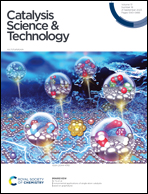NHC-catalyzed enantioselective radical reactions of enal and pyridinium salt: mechanism and origin of regio- and stereoselectivities†
Abstract
Understanding the origin of regio- and stereoselectivities of radical reactions remains a great challenge in radical chemistry. To address this, we conducted density functional theory calculations to investigate the possible mechanisms and origin of selectivities of N-heterocyclic carbene (NHC)-catalyzed enantioselective radical reactions of enals and pyridinium salts. Our findings suggest that the energetically favorable pathway involves a series of steps, including nucleophilic attack of NHC on enal, [1,2]-proton transfer, diradical generation via relayed-PCET, stereoselective C–C bond formation, [1,5]-HAT, N–N σ-bond homolysis, [1,3]-proton transfer, esterification, and regeneration of the NHC catalyst. NCI and AIM analysis revealed that C–H⋯Cl and C–H⋯π interactions are the primary factors controlling stereoselectivity. We conducted multiple analyses to explore the nature of the radical transformation processes. Overall, our study provides insight into the detailed mechanisms and origin of regio- and stereoselectivities in these kinds of NHC-catalyzed radical reactions and serves as a valuable case study for theoretical investigations on radical reactions.



 Please wait while we load your content...
Please wait while we load your content...